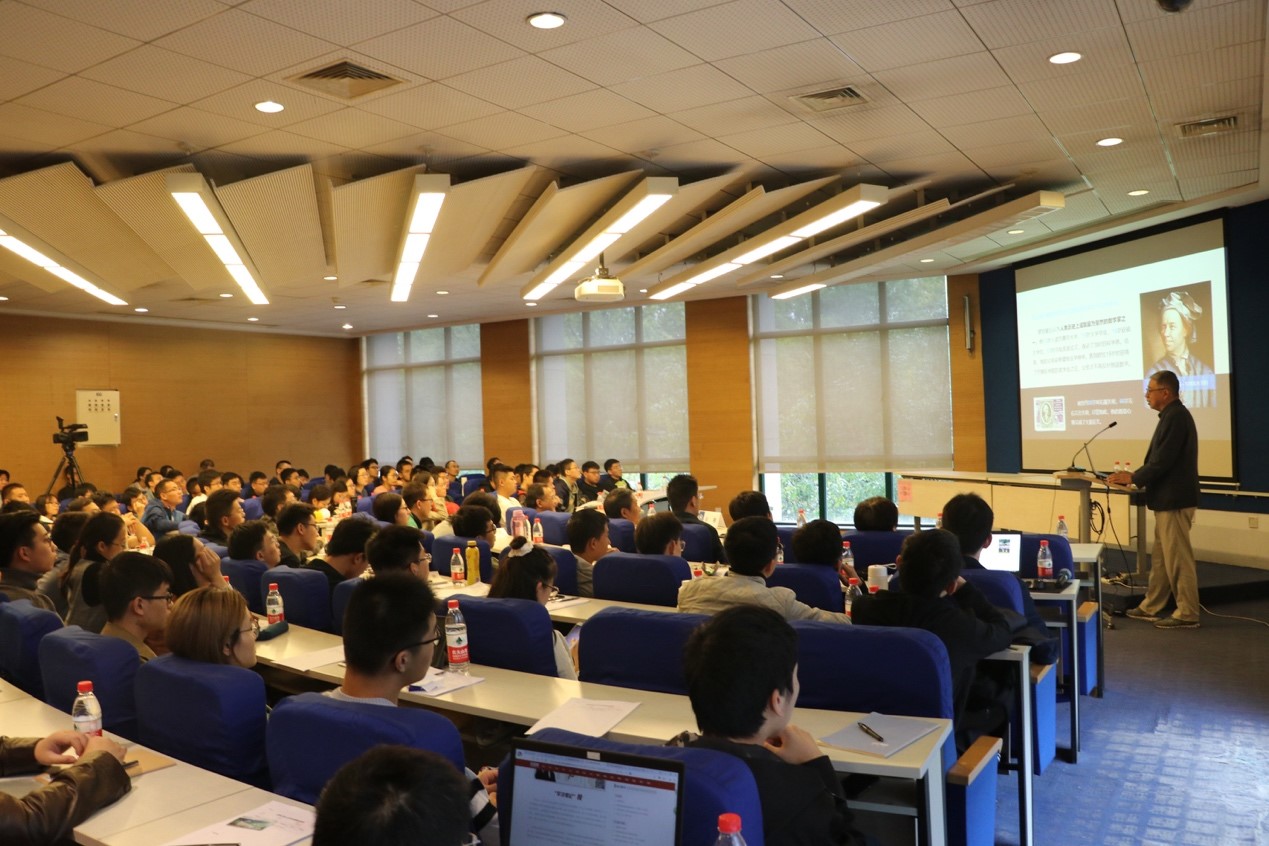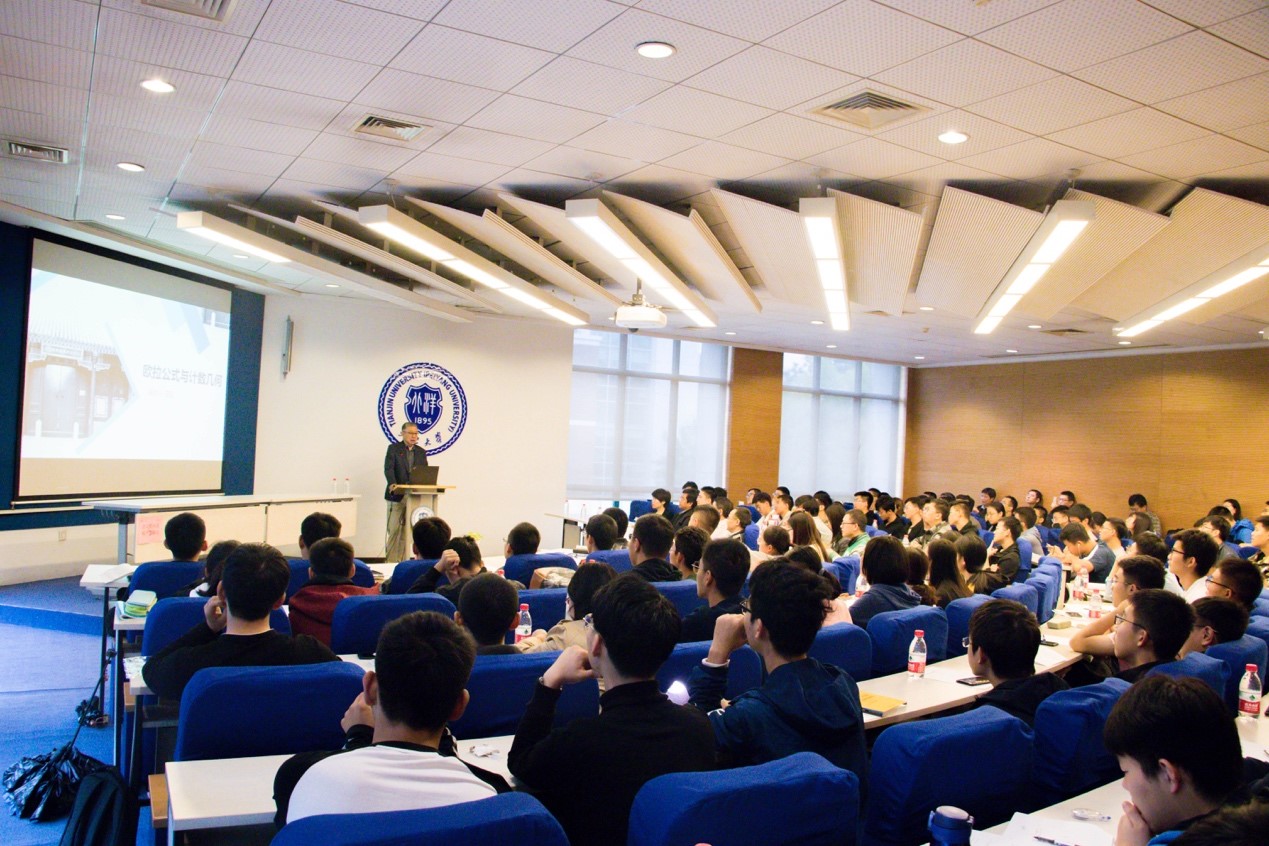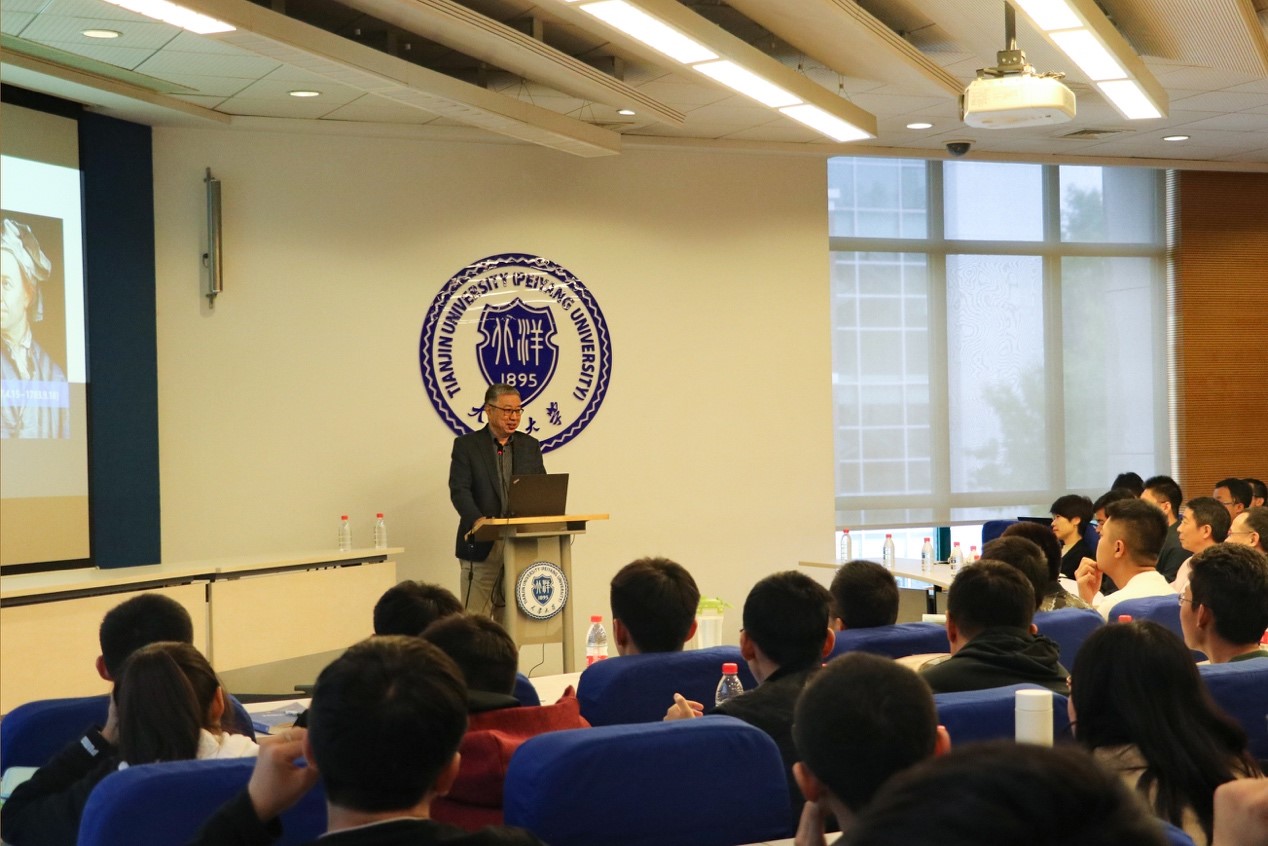On October 13th, despite sharply dropped temperature and autumn drizzle, the eighth conference room of Tianjin University was crowded. “I am very glad today to come to Tianjin University, a school that has a longer history than Peking University.” Professor Tian Gang, academician of CAS and vice-president of Peking University said, which instantly brought him closer to the audience.

Professor Tian Gang started his lecture with a simple question “What is a regular polyhedron?”. There are only five kinds of regular polyhedrons. This is the famous result of the ancient Greek mathematician Euclid's "Geometry Original" around 300 BC. Then he introduced the outstanding mathematician Euler, who completed a large number of papers by mental arithmetic in the case of blindness, becoming the most prolific mathematician in history. The Euler formula is known as one of the most beautiful formulas and many constants, formulas and theorems named after Euler can be found in mathematics and many branches.

Professor Tian Gang introduced the process of using the Euler formula to prove that there are only five regular polyhedrons, and the contributions made by mathematicians such as Descartes, Leibniz, Euler and Cauchy in the proof. The Euler formula of convex polyhedron can be extended to arbitrary topological space. Afterwards, Tian Gang explained the definition and principle of the Euler number in more general topological space and the famous Hopf theorem. He took football and other common things in life as examples to help the audience understand how to define the Euler numbers in more general space.
The counting geometry problem is a mathematical problem that originated from more than two thousand years ago. The study of the number of solutions of multivariable algebraic equations is an important branch of algebraic geometry. Professor Tian said that since the 1990s, inspired by the study of physics field theory, the research of counting geometry is more systematic and closely related to other branches of mathematics such as representation theory and differential equations. Professor Tian introduced his collaboration work with Professor Ruan Yongbin in giving a strict definition of n(d) in 1993 and obtaining the recursive formula of n(d), contributing to the development of Gromov-Witten theory (GW theory), which promotes the development of counting geometry and provides a mathematical basis for important problems.

At the end of the lecture, Professor Tian patiently answered questions one by one, using his own experience to guide students how to conduct more effective and in-depth study and research, and how to achieve true self-improvement. He untangled the history of the Euler formula, illustrated a large number of examples in daily life, displayed frontier problems in mathematics, making the audience know more about the history of mathematics and have a more intuitive understanding of highly abstract concepts and theories in modern mathematics. He said mathematical research is endless, hoping that more mathematical talents will make more contributions in the future.




